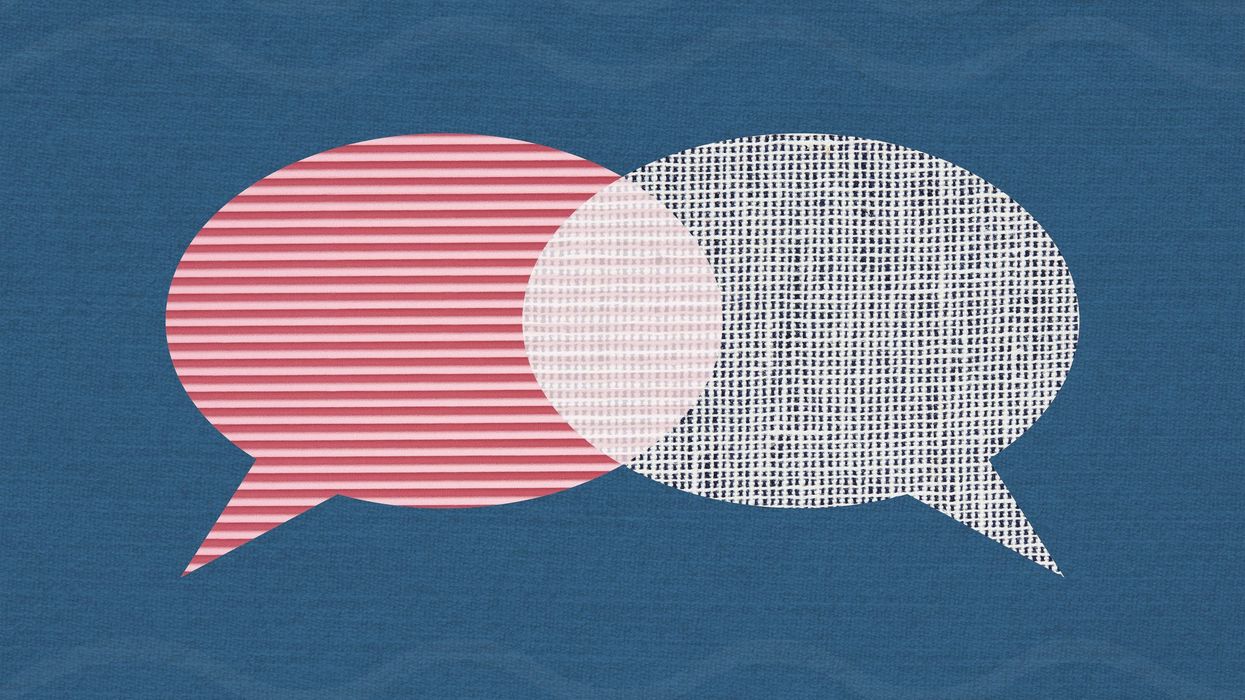Over the last several weeks, the Trump administration has deployed the National Guard to the nation’s capital to crack down on crime. While those on the right have long been aghast by rioting and disorder in our cities, pressing for greater military intervention to curtail it, progressive residents of D.C. have tirelessly protested the recent militarization of the city.
This recent flashpoint is a microcosm of the reciprocal outrage at the heart of contemporary American public life. From social media posts to street protests to everyday conversations about "the other side," we're witnessing unprecedented levels of political outrage. And as polarization has increased, we’ve stopped even considering the other political party’s concerns, responding instead with amusement and delight. Schadenfreude, or pleasure at someone else’s pain, is now more common than solidarity or empathy across party lines.
When conservatives express outrage, liberals dismiss them as bigots and racists. When liberals protest, conservatives roll their eyes at the alleged virtue signaling. We celebrate when our adversaries get upset because their anger means our side is winning. As researchers studying morality and political behavior, this trend is deeply concerning to us—not because people are too emotional about politics but because too many dismiss their neighbor’s emotions instead of seeing the genuine moral intuitions they reflect.
Outrage is a moral alarm—a signal that something is unfair, unjust, or harmful. Deeply tied to morality, outrage guides us to protect the vulnerable from harm. We don’t just process injustice intellectually; we feel it.
Nor is moral outrage just for show: new science shows that outrage is less about posturing than genuine perceptions of harm. People express this anger because they perceive a threat to themselves or others. Outrage is a social emotion that spreads through groups to help us collectively restrain or punish those who threaten the social order. For example, everyone in your HOA gets upset when one neighbor is too lazy to mow their lawn, and ticks spread.
Historically, a whole community might share the same fears of obvious threats like murderers, thieves, or the spread of famine or plague. But in today’s conditions of relative safety, questions of harm and moral culpability are more ambiguous. Yet we feel just as outraged about the harms we see today as our forebearers might have, even when our neighbors might not see harm in the same place that we do.
Take the debate over book bans. When conservatives push to remove books from school libraries, they see it as protecting children from harm—exposure to ideas they believe are dangerous. When liberals fight book bans, they likewise see it as protecting children from harm—censorship that restricts access to important ideas. Both sides are morally motivated and trying to stand up for the vulnerable. They just disagree about who the real victims are.
If outrage is about harm, why do we treat it like a joke? We dismiss the other party’s outrage because we see them as an outgroup—people who are outsiders, not like us, and less and less like fellow citizens. And as contemporary American politics becomes increasingly bifurcated into separate discourse communities—with wholly different media diets, civic institutions, and values—it becomes difficult to even understand why people on the other side feel the way they do. It’s tempting to conclude that their concerns don’t matter. After all, they’re the enemy. Who cares what they want?
But dismissing the other side’s outrage is a dangerous mistake. There’s always a kernel of truth in the other side’s perceptions of harm, even if we disagree over which harm takes precedence. For example, liberal outrage highlights the importance of bodily autonomy for issues like access to abortion, while conservative outrage over bodily autonomy touches issues like vaccine mandates. Both reactions are valid and point towards a moral commitment shared by all sides of the political spectrum. Neither position should be dismissed on the basis of which party sounded the alarm.
So what do we do? First, take outrage seriously. Instead of rolling your eyes at the other side’s anger, ask yourself: What harm do they see? Instead of assuming they’re just looking for attention or trying to score political points, try to understand what they think is at stake.
Second, don’t get outraged about outrage. Meta-outrage—being mad that the other side is mad—just escalates division. If someone is outraged about something you find trivial, don’t assume they’re irrational. Ask questions to see the harm they see.
Finally, focus on conversations, not battles. Studies show that when people feel heard and respected, they’re more willing to listen in return. Ask “Why does this issue matter so much to you?” That question can shift a conversation from combative to constructive.
Outrage isn’t the problem; it’s an important part of human nature that helps us protect the vulnerable and aim at a more just society. Dismissing it, however, is a problem. The more we treat the other side as outgroup members whose anger is a joke to be memed, the more we’ll close our eyes to the areas where we agree. These areas are more substantial than we think.
Polling from the Independent Center shows that voters of all stripes want to see politicians working across the aisle. To do that, we’ll have to take each other’s views, including outrage, more seriously.
Kurt Gray is author of the recent book Outraged: Why We Fight about Morality and Politics. He’s a professor in Psychology and Neuroscience at the University of North Carolina at Chapel Hill, where he directs the Deepest Beliefs Lab and the Center for the Science of Moral Understanding.
Lura Forcum is president of the Independent Center, a nonprofit organization of political independents. She is a consumer psychologist and a former professor of marketing.

















